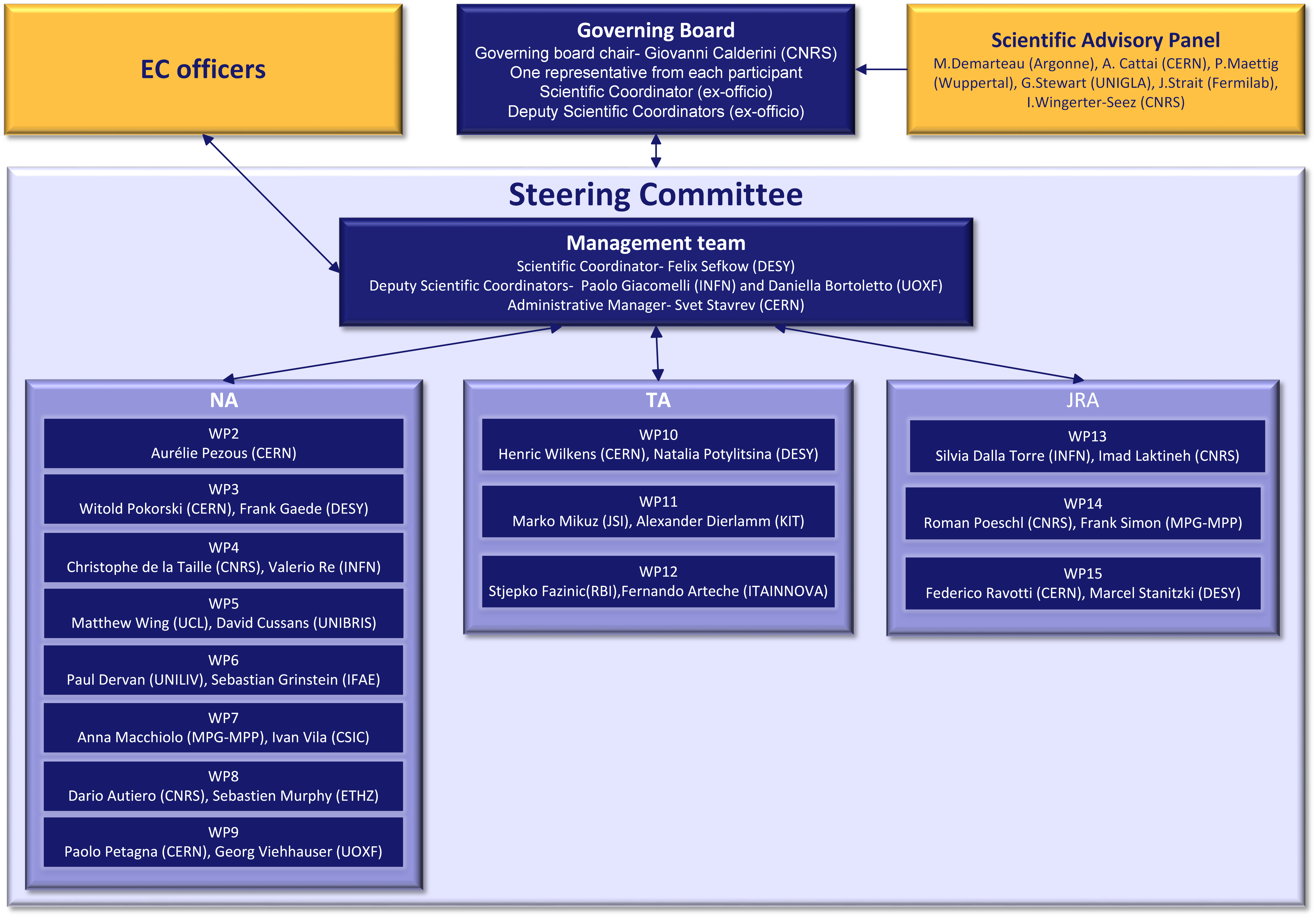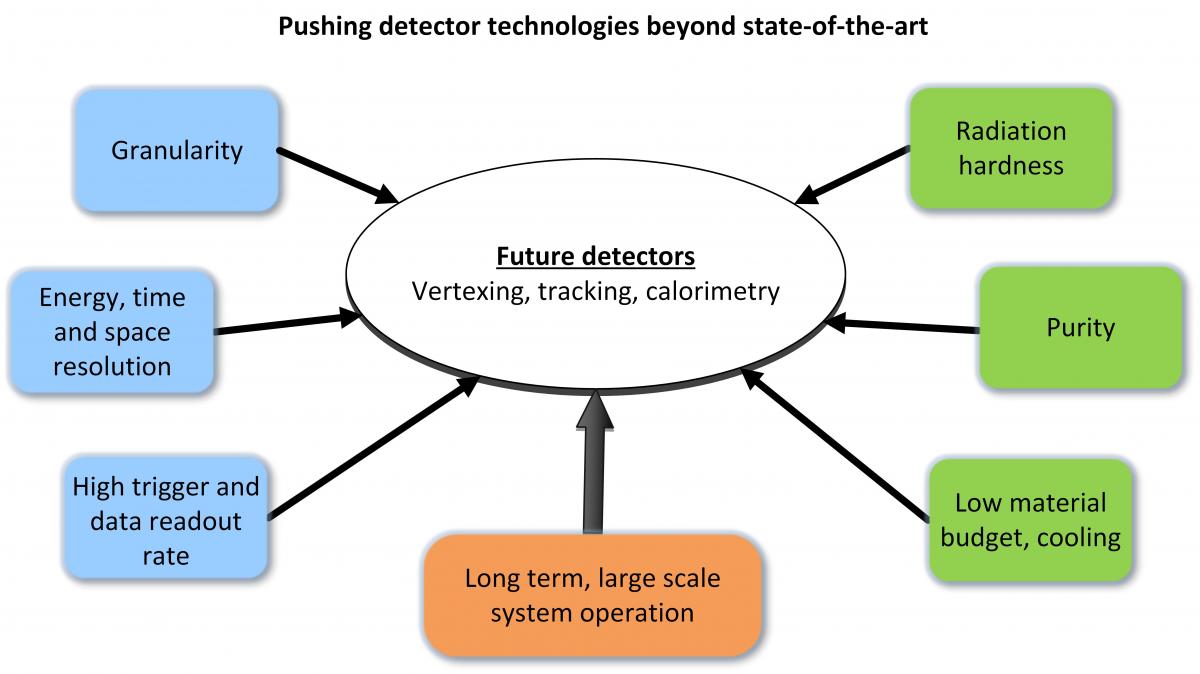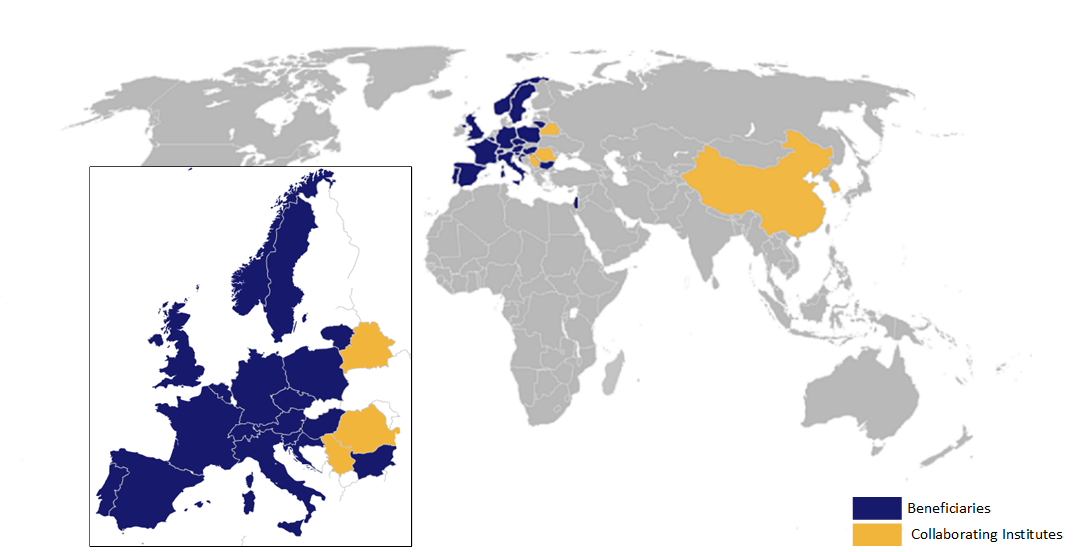AIDA-2020 aims at pushing detector technologies beyond the state-of-the-art and offering highly equipped infrastructures for testing of detector systems.
Essential dimensions of the AIDA-2020 project are:
- To increase the efficiency and quality of the beam test and irradiation facilities by supporting their upgrades and improvements (through a dedicated Joint Research Activity), and to reinforce the Transnational Access to these facilities by offering common and free TA to more than 900 users.
- To continue the activities with synergies between different projects, communities and work packages, which originated in AIDA, but with added value such as parallelisation and vectorisation for software frameworks and latest technologies for micro-electronics and data acquisition.
- To explore applications of novel technologies and to assess them for the challenging needs of future or upgraded HEP experiments (High-Voltage CMOS sensors, 3D electronics, MEMS – Micro-Electro-Mechanical System, large scale cryogenic detectors, micro-channel cooling, etc.)
- To enhance the infrastructures needed to advance from development of prototypes to a construction phase of large detector systems, with two JRAs: one for gas detectors and one for calorimetry.
- To cooperate with European Industry on the development for large series production of HEP detectors (gas and silicon detectors).
- To implement a novel mechanism in Integrating Activities (Proof-of-Concept Fund) to ensure the optimal exploitation of the innovation potential of research infrastructures through technology transfer and industrial application of technologies developed for particle physics.
Map of participant countries involved in AIDA-2020



